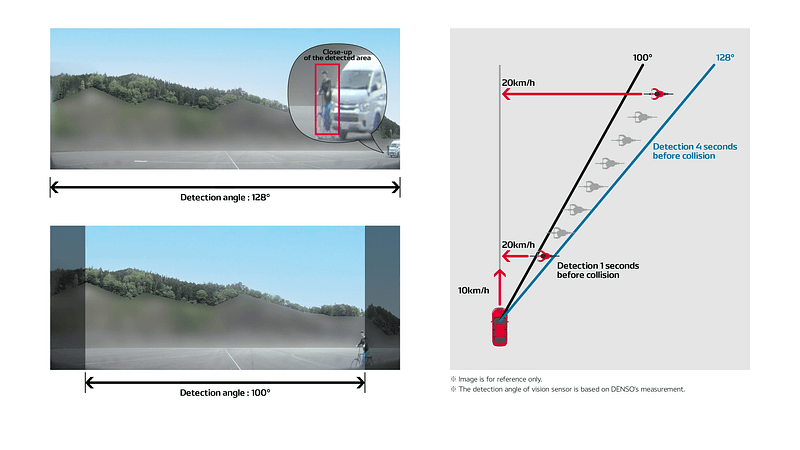DENSO expands vision sensor detection angle for Subaru Legacy Outback and Crosstrek
IMPORTANT NOTE: While DENSO Aftermarket is proud to share technical knowledge and experience, please note that the technology mentioned in this article is original equipment (OE) technology and is not yet available in its aftermarket range.

Many road accidents occur when cyclists or pedestrians suddenly enter, or try to cross, the road from the side. In Japan, such accidents account for about 30% of all road accidents involving pedestrians and about 70% of traffic accidents involving children under the age of 12, proving that drivers are not likely to see small children or fast-moving bicycles and even if they do notice them, they struggle to react in time, which is why accidents can occur.
Recognizing the importance of the issue, the new car assessment programme in Europe (Euro-NCAP) has made it necessary for new vehicles to be able to detect pedestrians and cyclists from the side of the road.
As a result, DENSO decided to tackle the issue and succeeded in expanding the detection angle of its vision sensor to 128°, which has made it possible to detect bicycles crossing the road when driving at low speed and meets the assessment conditions stipulated by Euro-NCAP. The revised sensor will therefore help to prevent accidents at crossroads, intersections and other areas where vehicles, motorcycles, cyclists and pedestrians come and go at various speeds.
A wider detection angle can detect many more objects, which means non-hazardous objects are also detected. This makes it critical for the sensor to decipher which is a threat and which is not. For example, when the sensor detects a cyclist about to cross the road, if the cyclist brakes and stops, the vehicle can keep driving without a collision. However, if the autonomous emergency braking is activated, the vehicle behaviour is unpleasant for the driver and is likely to cause other dangers due to its unexpected reaction.
The advantages of the wider detection angle and its practical usage have been achieved with the use of AI technology, which helps to determine whether such objects actually pose a risk based on time-series estimation, and subsequently minimise unnecessary and potentially dangerous, vehicle behaviour.
As this development clearly demonstrates, DENSO remains committed to developing safety products that are satisfactory to users, with the aim of increasing the safety features of all vehicles.
Below is an image comparing the new wide angle detection sensor, with a typical product (detection angle of 100°). As it shows, by expanding the detection angle to 128°, it is possible to detect crossing bicycles for example, more quickly.

Further details of the DENSO Aftermarket programme are available online at: www.denso-am.eu




















































